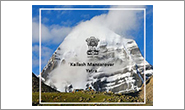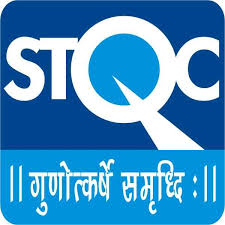Recent Developments in India-China cooperation in Science and Technology 09/23/2015
Recent Developments in India-China cooperation in Science and Technology
The Government of India has been paying attention to the practical benefits of science and technology applications in economic development. It has also made a conscious decision to use scientific research to serve as an engine for the ‘Make in India’ initiative in the years to come.
In his address at the 102nd Indian Science Congress on 3 January 2015, Hon’ble Prime Minister Mr. Narendra Modi, “Science and technology has helped reduce poverty and advance prosperity; fight hunger and improve nutrition; conquer diseases, improve health and give a child a better chance to survive; connect us to our loved ones and the world; spread education and awareness; and, given us clean energy that can make our habitat more sustainable.” He also acknowledged the role that science and technology has played in China’s economic success by saying, “A nation`s progress and its human development are linked to science and technology. In more recent times, China`s emergence as the second biggest global economy is in parallel to its rise to the second place in science and technology activities.”
It is therefore not at all surprising that cooperation in science and technology is an integral part of the India-China bilateral relationship.
When Chinese President Xi Jinping undertook a state visit to India in September 2014, both sides agreed to carry out bilateral cooperation in civil nuclear energy and tasked the Department of Atomic Energy of India and China Atomic Energy Authority to begin working level consultations. Also on 18 September, 2014, the Chairman of the Indian Space Research Organization (ISRO) and Vice Administrator from China National Space Administration (CNSA) signed a Memorandum of Understanding on Cooperation in the Peaceful Uses of Outer Space. This MoU enables both sides to encourage exchanges and cooperation in the exploration and use of outer space for peaceful purposes.
Subsequently, when Prime Minister Narendra Modi visited China in May 2015, both sides welcomed the establishment of the space cooperation mechanism between the space authorities of India and China as well as the signing of the 2015-2020 Space Cooperation Outline between ISRO and CNSA. Besides cooperation in outer space, both sides also signed agreements concerning Cooperation in the field of Earthquake Science and Earthquake Engineering, Cooperation in the field of Ocean Sciences, Ocean Technology, Climate Change, Polar Science and Cryosphere; as well as Scientific Cooperation in the Sphere of Geosciences.
A tabulation of the agreements signed during the May 2015 visit of Prime Minister is placed below:
| S.No. |
Name of Agreement / MOU |
Gist of Agreement / MOU |
| 1 |
Space Cooperation Outline (2015-2020) |
The Outline for Space Cooperation provides specific programmes that the two sides plan to cooperate on during 2015-2020. The themes selected for cooperation include cooperation on remote-sensing missions, space-based meteorology, lunar & deep-space exploration, piggy-back launching, satellite navigation, components and education & training. |
| 2 |
Memorandum of Understanding between the Ministry of Earth Sciences of the Republic of India and the China Earthquake Administration of the People’s Republic of China Concerning Cooperation in the Field of Earthquake Sciences and Earthquake Engineering |
This MOU provides a framework for collaboration between India and China for research in Earthquake Sciences, Earthquake Engineering and Geosciences. The broad objective of the cooperation is to enable the exchange of information between the two countries, personnel and technical knowledge, and to support the improvement and development of programs in Earthquake Sciences and Services. |
| 3 |
Memorandum of Understanding between Ministry of Earth Sciences of the Republic of India and the State Oceanic Administration of the People’s Republic of China on Cooperation in the field of Ocean Sciences, Ocean Technology, Climate Change, Polar Science and Cryosphere |
The MoU constructs a framework for collaboration between India and China in the sphere of ocean sciences and associated domains. The MoU enables exchange of scientific resources, personnel and technical knowledge, and cooperative activities in scientific areas of mutual interest. |
| 4 |
Memorandum of Understanding on Scientific Cooperation between Geological Survey of India, Ministry of Mines, of the Republic of India and China Geological Survey,Ministry of Land and Resources of People’s Republic of China in Geosciences |
The aim of this MOU is to strengthen mutual scientific cooperation in Geo Sciences by means of studies and research projects to strengthen the bilateral co-operation. |
Conclusion
In his speech in Shanghai on 16 May, 2015 at the India-China Business Forum, Prime Minister said, “India has always been a knowledge society. Whereas, you have been an innovating society. Ancient China was highly advanced in Science and Technology. Like Indians, Chinese too sailed to Americas and distant corners of the world in their ships. They had the Mariners’ Compass and Gun Powder. But I must add that during this time, Indian astronomy and mathematics were quite popular in China. Indian astronomers were appointed on the official boards set up to prepare calendars. The Indian concept of Zero and that of nine planets have been helpful in discoveries in China. So, our ideas had a role to play in your innovations. Thus, we have a lot in common and we can do a lot together. As we helped each other growing spiritually, we have to help each other growing economically.”
There exists considerable potential for future cooperation between India and China in the sphere of science and technology. Such cooperation is in keeping with the tradition of achievements over the ages in the two civilizations.
Author: Vinod K Jacob, Counsellor [S&T], Embassy of India, Beijing





























